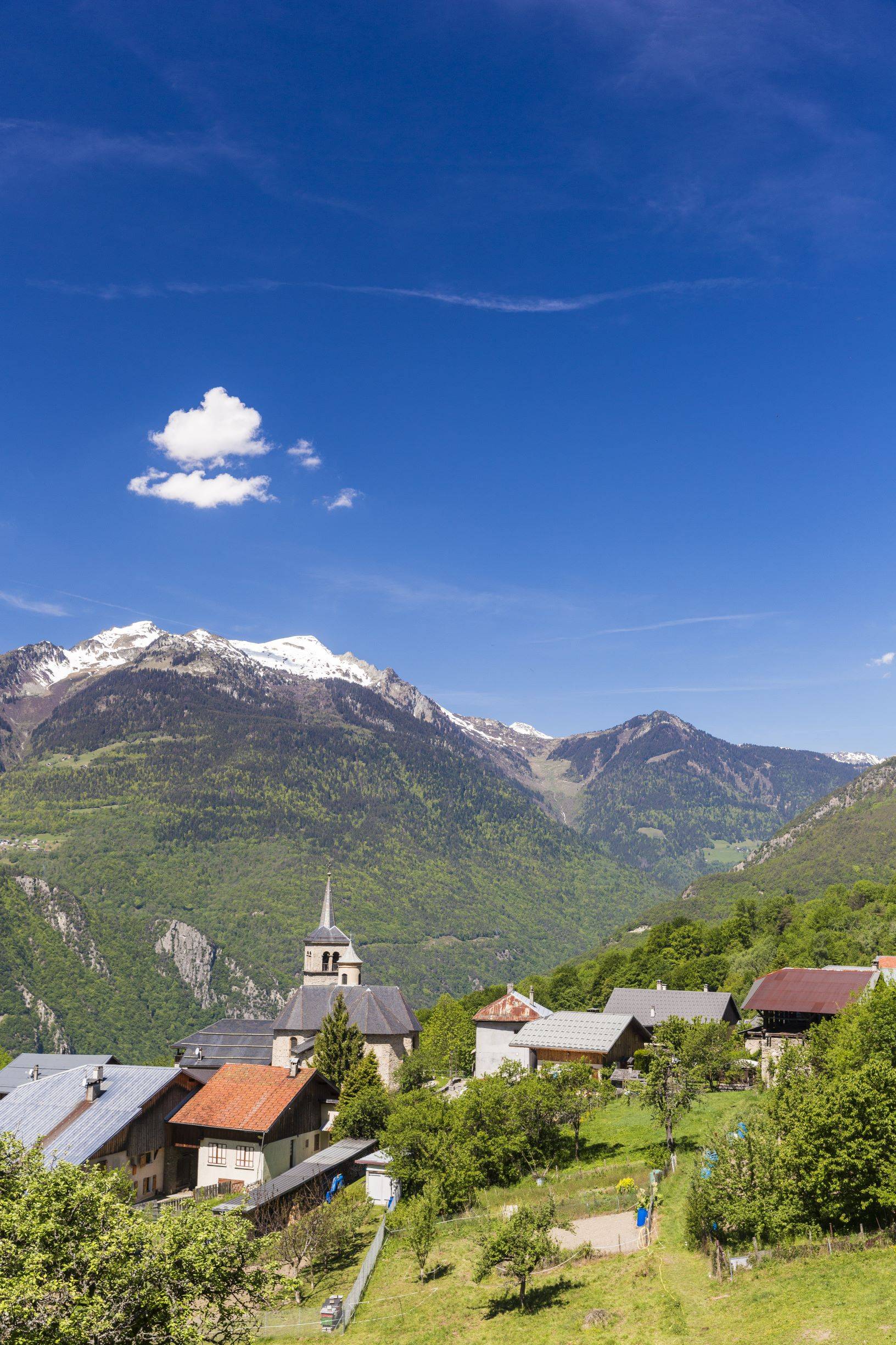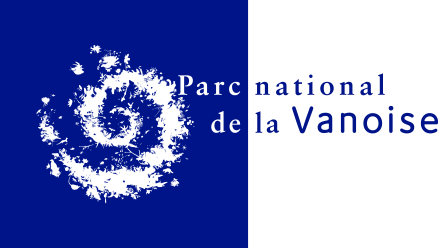
5-Vines and orchards on the Aigueblanche hillsides
Woodland trail : 4,2 km
Path : 1 km
2 difficult stretches
Description
Starting in Aigueblanche, this itinerary mostly keeps to the road, interspersed with a few leafy jaunts along forest tracks. You begin by making your way up into the meadow-orchards and then continue on to the hamlet of Villargerel and its remarkable Baroque church – the literal highpoint of your outing. The return journey is by way of an old path through bygone vineyards whose existence is still evidenced by terraces and “sartots” (stone huts used as wine cellars). Back in Aigueblanche, take the greenway and acquaint yourself with its historic centre and château.
Follow the green waymarks: Les Vignes.
E-bike rental shop:
Aigueblanche - Sport 2000 Mottet Sports
333 rue de la petite prairie - Face Super U
73260 AIGUEBLANCHE
+33 (0)4 79 24 53 17
- Departure : Sport 2000 Mottet Sports Car park
- Arrival : Sport 2000 Mottet Sports Car park
- Towns crossed : AIGUEBLANCHE
Forecast
Altimetric profile
Recommandations
If in doubt, you can take an introductory lesson in how to ride an electric bike with an instructor.
If you see a herd ahead, slow down and go round it. If there is a patou, a guard dog, climb down from your bike and walk, pushing it alongside you. Avoid making any sudden or aggressive gestures towards the dog and move away from the herd slowly and calmly. The dog will only be checking that you do not pose a threat to its herd. Respect the parkland and close gates behind you after you've gone through them.
The mountain is living, please respect it by staying on the paths and tracks.
Information desks
Immeuble les Eaux Claires, 73260 La Léchère-les-Bains
Transport
You can then get a coach or taxi to Aigueblanche
Find out more at: www.transavoie.com
Have you also thought about car-sharing?
Access and parking
Parking :
Accessibility
- Emergency number :
- 114
5 points of interest

 Know-how
Know-howE-bike rental shop: Sport 2000 Mottet Sport
Aigueblanche - Sport 2000 Mottet Sports
333 rue de la petite prairie - Face Super U
73260 AIGUEBLANCHE
+33 (0)4 79 24 53 17
Le chemin des vignes - CCVA  Know-how
Know-howVine route
The Aigueblanche vineyard was once highly reputed and the quality of its wine praised particularly by the Royal Academic Society of Savoie (1845).
From very ancient times, the well-exposed hillsides were planted with vines. The main grape varieties at the time were the douce noir de le Bois, le guy noir, martincot, le gouche, le régentât and hyvernais de Tarentaise for red wine and la jacquère, le guy blanc, le gouais, le bellochin and le blanc verdun for white wine. In the 18th and 19th centuries, villagers in the Aigueblanche valley bought the feudal rights over livestock rearing, crop-growing, the wood and the vines, which were the property of the archdiocese and nobility.
Each family had their own sartot, a typical hut for storing tools. In 1876 phylloxera reached Savoie and wiped out most of the vines. Each of the plants had to be replanted one by one and many vinegrowers used more rustic seedlings that better withstood the climate. It was at this time that the present-day vine route would be developed to facilitate vinegrowing work between Grand-Coeur and Aigueblanche. Nowadays much of the vineyard has been abandoned: the only surviving remnants of this past being the terraces and the sartos.
L'église baroque Saint Martin de Villargerel - PJAC  History
HistoryBaroque church of St Martin de Villargerel
This remarkable, listed building was completed in 1685. Step inside to admire the decorative wall paintings and altarpieces. The dome also bears trompe l'oeil paintings.
Open in July and August, or by appointment. Why not also make the most of the outings organised by Aigueblanche's Culture & Heritage association?
http://www.aigueblanche-patrimoine.com/
 History
HistoryOld town and fortified manorhouse of Aigueblanche
The late 13th century fortified manorhouse lords over the village centre. The Aigueblanche domain was owned by the powerful families of the Briançon then Montmayeur lords, before being elevated to a marquisate in favour of Charles-Victor-Joseph de Saint-Thomas in 1680. In the beginning, the fortified manorhouse was surrounded by walls; in 1884, the vestiges of these walls were still visible. The manorhouse we can see today seems to date back to the late 15th century. It has a square tower, a main house and a tower in the shape of a horseshoe. You can also make out several arrow slit windows. Solidly built from tufa and finely cut (ashlar) stone blocks, this fortified manorhouse is still in good condition. Between it and the church, the winding streets still have a mediaeval air about them and bear the traces of the water that flowed through here.
In the Middle Ages, there are records of a motte castle (fortified structure on a mound) on the right bank of the River Isère. In the 5th century Richard Curt, an ancestor of the Briançon family, had a peacetime residence in Aque Clare (Aigueblanche) where the village gradually developed, connecting with the Roman road via a wooden bridge (Pont du Bourgeaillet). The old town of Aigueblanche is in stark contrast with the main A road, which is wide and rectilinear. And yet this also represents the town's history, having once been a royal and imperial road.
Le moulin à huile de noix d'Aigueblanche - Scalp-OTVVA  Know-how
Know-howAigueblanche walnut oil mill
Mills have always shaped the area around the municipality of Aigueblanche. There is even a place called "Les Moulins", which means mills. Most were built along the white water stream after which the municipality has been named.
In 1729, the Sardinian land register listed seven grain or oil mills. In 1956, this walnut oil mill stopped operating, mainly following the pulling-up of walnut trees in the 1960s and '70s to sell the wood to furniture makers.
The building, which harbours an original, one-of-a-kind mechanism, was kept in good condition until the municipality acquired it in 1999.
The municipality undertook major renovation work, firstly on the building itself and then the mechanism. Following repairs to the wheel, the mill is back in working order and producing oil again. The Culture & Heritage association, in partnership with the Tourist Office of La Léchère, includes the mill in a tour with a demonstration.
From April to October, open every Friday from 14:30 onwards, with a pressing demonstration at 15:00 and 17:00.
To contact the association, call: +33 (0)7 81 95 19 56
